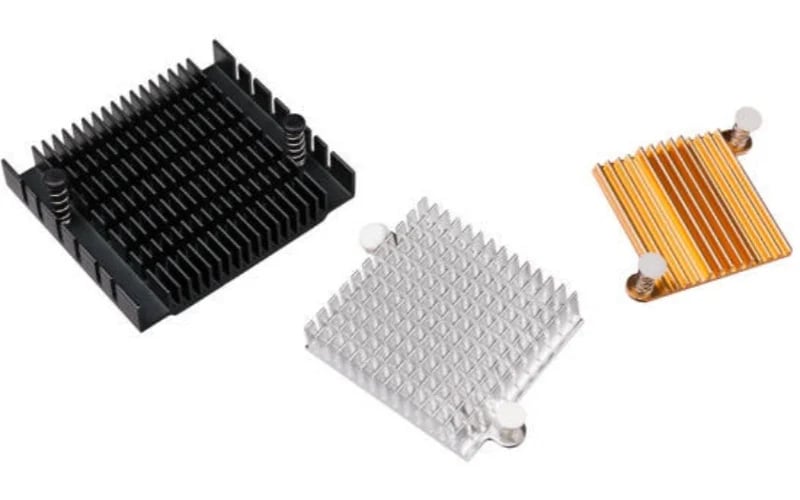The Basics of vapor chamber heat sinks
Heat management is a pivotal part of many technologies including electronic devices and computer processors. Components generating heat with high intensity require mediums for heat dissipation that are effective, robust, and efficient. Vapor Chamber Heat Sinks are an innovative approach to this challenge. By understanding the concept and advantages of vapor chamber heat sinks, we can better utilize this technology in industries and products where heat management is crucial.
What is a Vapor Chamber Heat Sink?
A vapor chamber heat sink is a heat dissipation technology that uses a vacuum-sealed chamber filled with a fluid that absorbs and dissipates the heat generated by high-intensity electronic components. The vapor chamber contains a small amount of working fluid, usually water, that evaporates and transfers heat quickly to the plate's sides. The liquid then gets condensed and circulated back to the initial evaporative zone, and the heat is dissipated by having the generated heat spread across the fins of the heat sink and surrounding environment and dissipating it. They are an essential component in many electronic devices, appliances, and systems that require optimal heat dissipating features.
Vapor Chambers vs. Traditional Heat Sinks
Vapor chamber technology outperforms conventional heat sink technology in terms of performance and efficiency because it can handle more heat-dissipating loads than traditional heat sinks. Traditional heat sinks are made of metal, with fins that absorb and dissipate heat generated by electronic components by transferring the heat through conduction within the fins of the heat sink. Traditional heat sinks can become inefficient due to their sizes and structural limitations. However, vapor chamber heat sinks operate through a combination of evaporation, condensation, and thermal conductivity and overcome these disadvantages by efficiently transferring the heat generated by electronic components to the surrounding environment.
The Advantages of Vapor Chamber Heat Sinks
The benefits of vapor chamber heat sinks over traditional heat sinks are many, including:
- High Cooling Efficiency
- High Thermal Conductivity
- Low Thermal Resistance
- Optimal Heat Management
- Noisy-Free Operation
- Reduced Size and Weight
Applications of Vapor Chamber Heat Sinks
Vapor chamber heat sinks come in a variety of sizes and configurations that are tailored to fit various electronic devices, personal computers, aerospace, military, and other applications that require extended and robust heat management.
- Telecommunications: Vapor chamber heat sinks are used in cellphone base stations that operate for extended periods and require round-the-clock operation.
- Computers and IT: Vapor chamber heatsinks are installed in personal computers and laptops to ensure optimal performance and prevent overheating while improving the device's quality and lifespan.
- Aerospace: Vapor chamber heat sinks are used in electronic components in satellites, spaceships, and other related equipment and devices, where robust and efficient heat management is pivotal.
- Medical Equipment: Vapor chamber heat sinks are used in medical equipment such as MRI machines, x-ray machines, and other advanced diagnostic equipment that typically produce high amounts of heat.
Designing a Vapor Chamber Heat Sink
Designing a vapor chamber heat sink involves multiple steps, including:
- Optimal Dimensioning: A good vapor chamber heat sink should have a perfect size as it influences the space where it is installed.
- Selecting The Best Fluid: The working fluid's choice is a critical aspect of a vapor chamber heat sink because it determines the heat conductivity and capacity.
- Determining the Heat Load and Dissipation Requirement: The heat load is the amount of heat generated by the electronic components, and it must be lower than the heat dissipation capacity of the vapor chamber heat sink.
- Efficient Manufacturing: The manufacturing process of a vapor chamber heat sink is complex because it involves many stages, and accurate designs and production with no tolerance error are critical.
The Future of Vapor Chamber Heat Sinks
Vapor chamber heat sinks have become popular and positively pronounced in the tech and electronic industry due to its efficiency and advantageous features. Further advancements are expected, including:
- Miniaturization of vapor chambers
- Embedding vapor chambers in complex geometry components
- Introduction of hybrid cooling solutions
Buying and Installing Vapor Chamber Heat Sinks
Vapor chamber heat sinks are available in the market, allowing consumers to buy quality heat management products to improve their device's performance. If not experienced in choosing and installing heat sinks, it is recommendable to hire a skilled technician to ensure the chosen heat sink is a perfect fit and in optimal performance at all times.
Conclusion
Vapor chamber heat sinks are technological innovations that are becoming more common in electronics and appliances. They are efficient, robust, and exceedingly effective than traditional heat sinks in handling high heat dissipating loads. Hence, vapor chamber heat sinks are a must-have for electronic devices that generate high heat loads to ensure optimal performance and lifespan efficiency of the equipment. By understanding vapor chamber heat sink technology and its applications, we can utilize the technology for optimal heat management.

